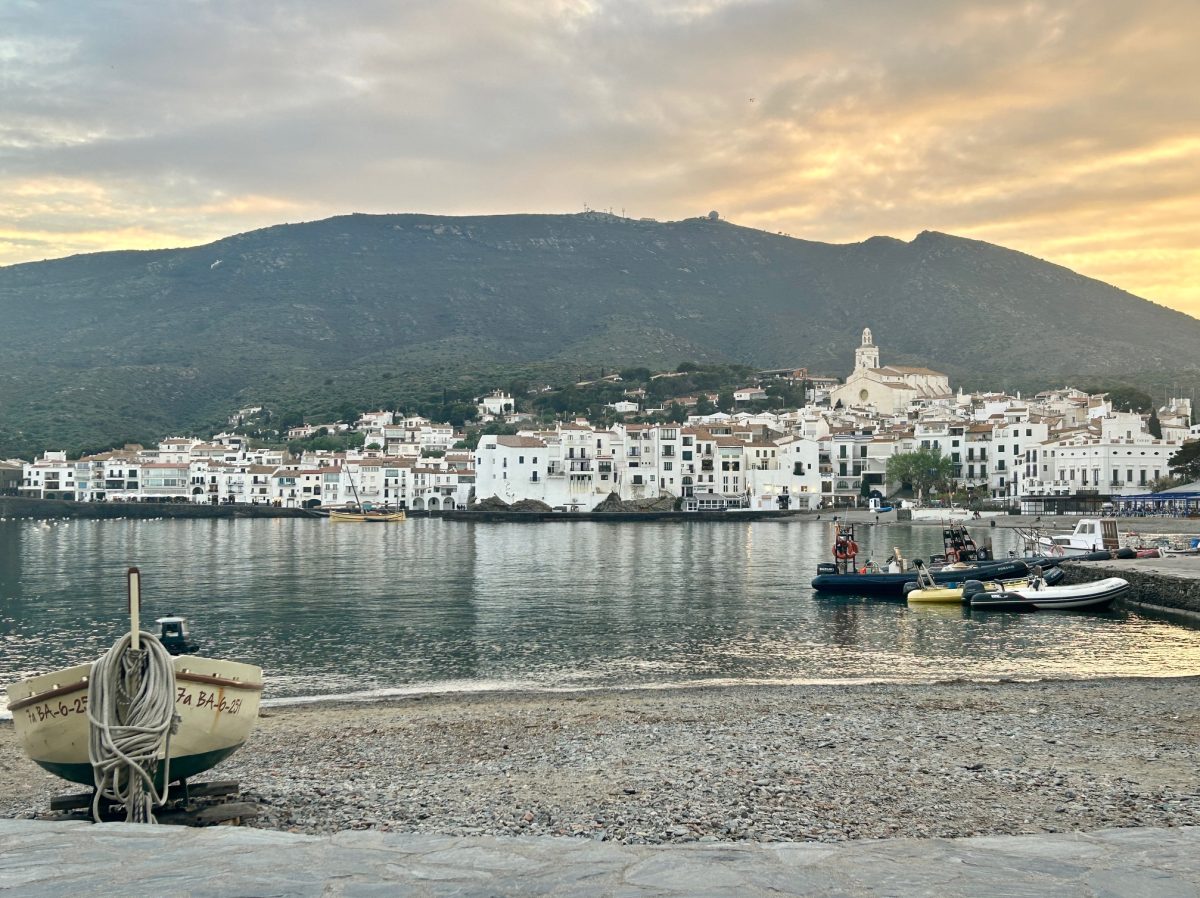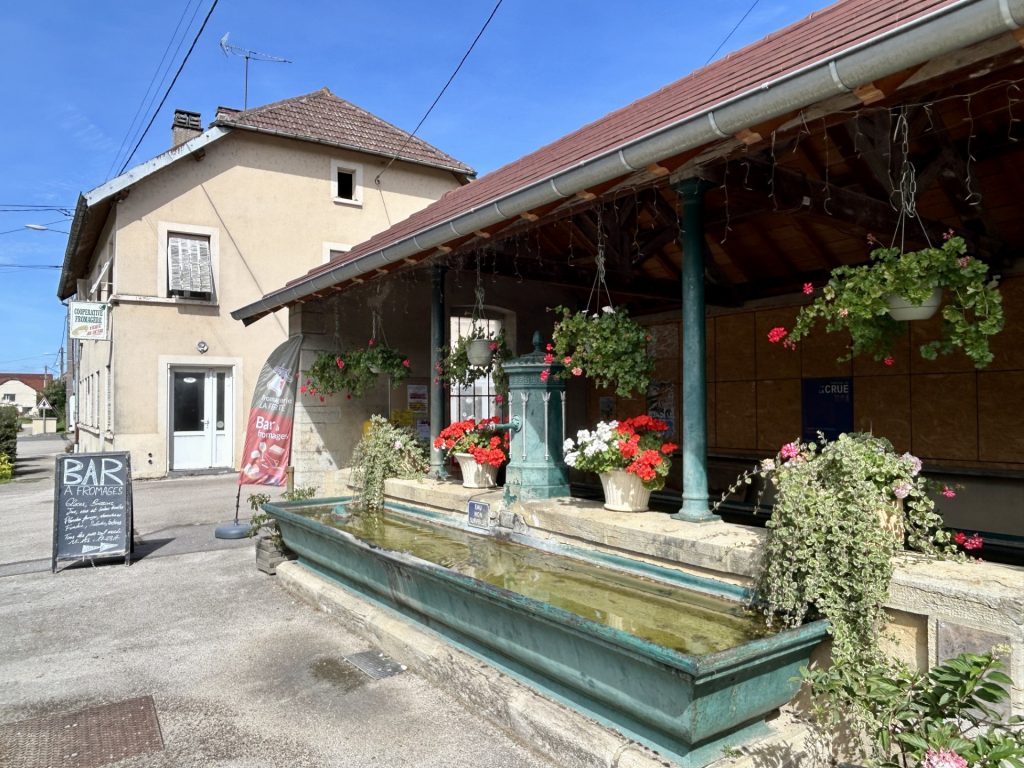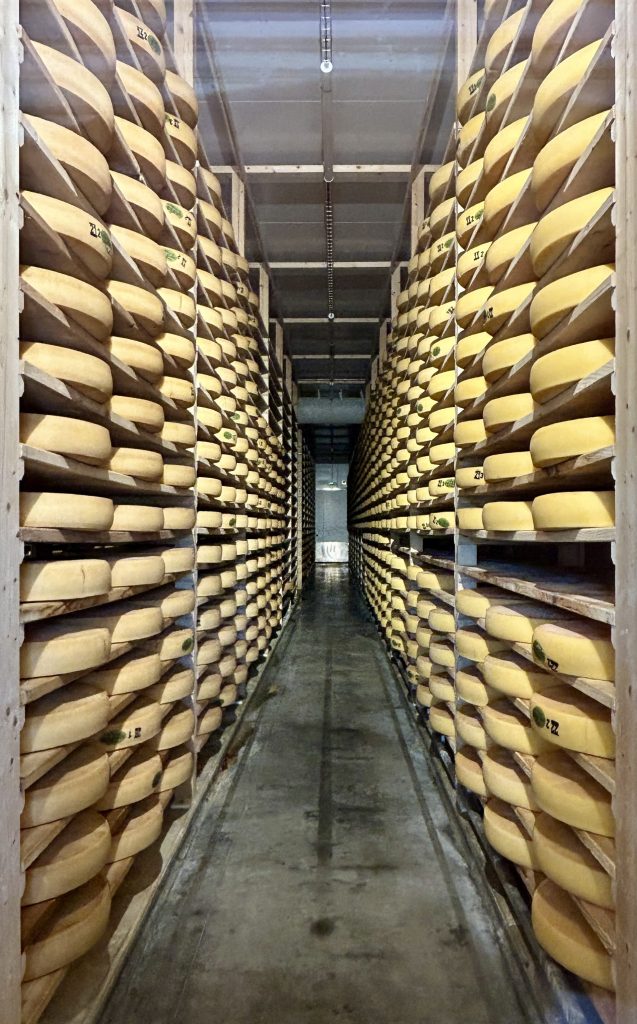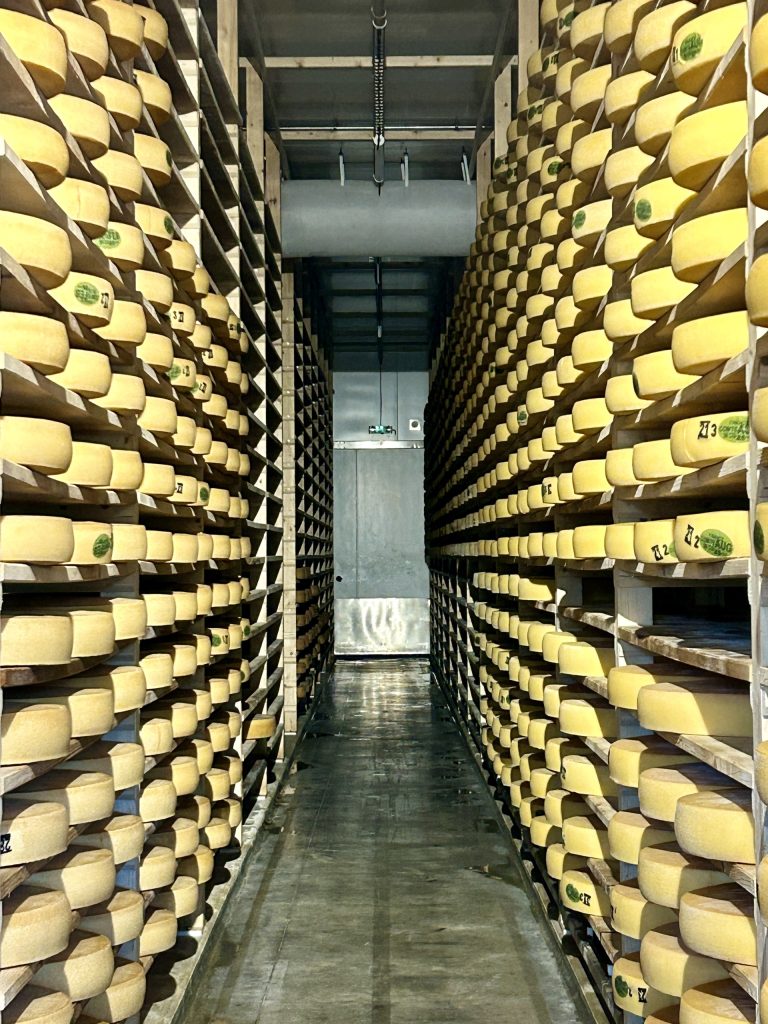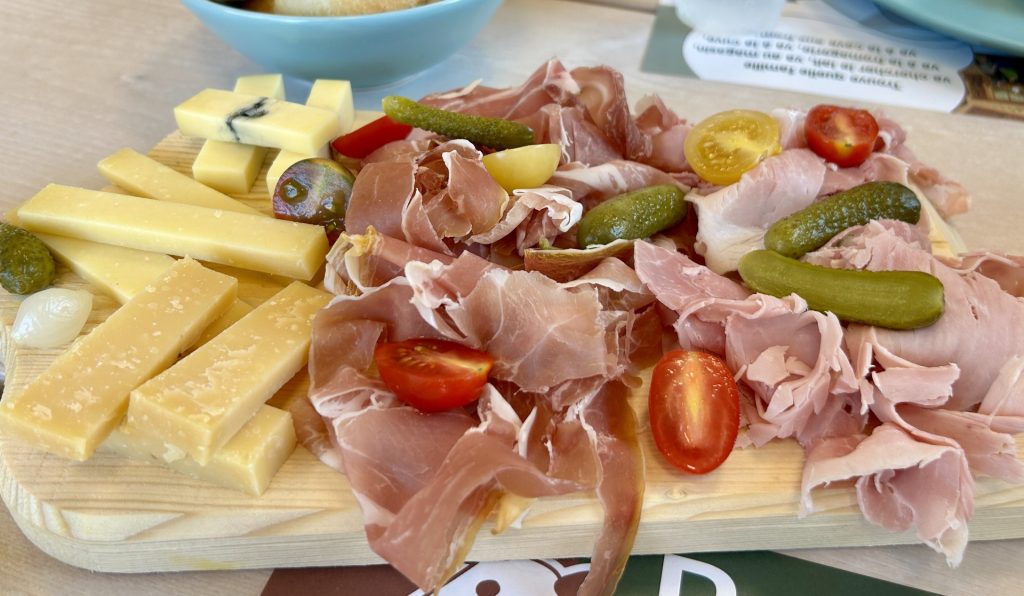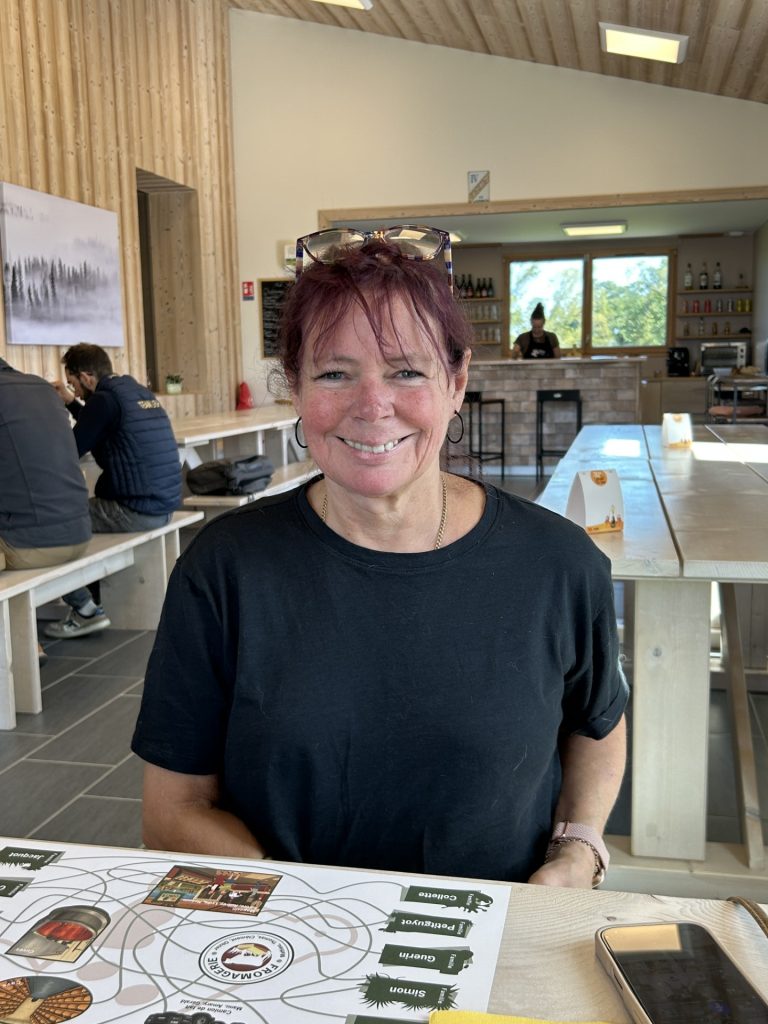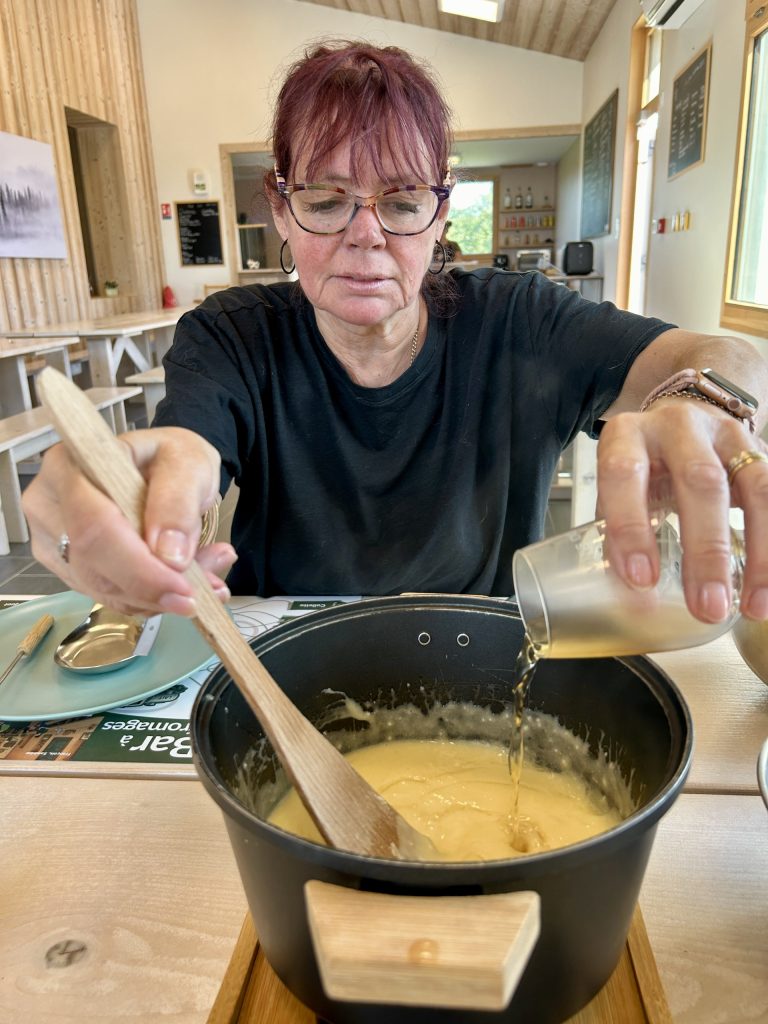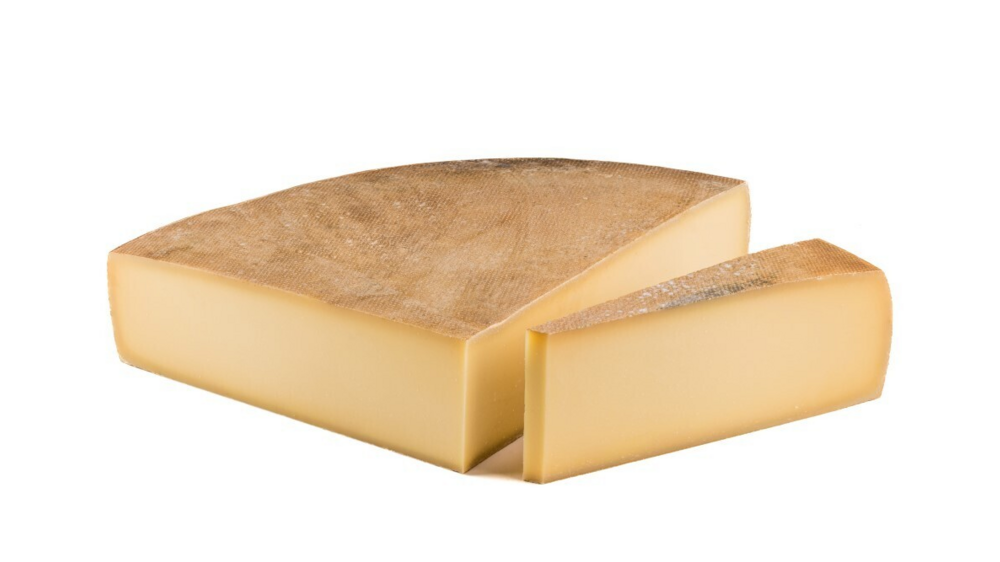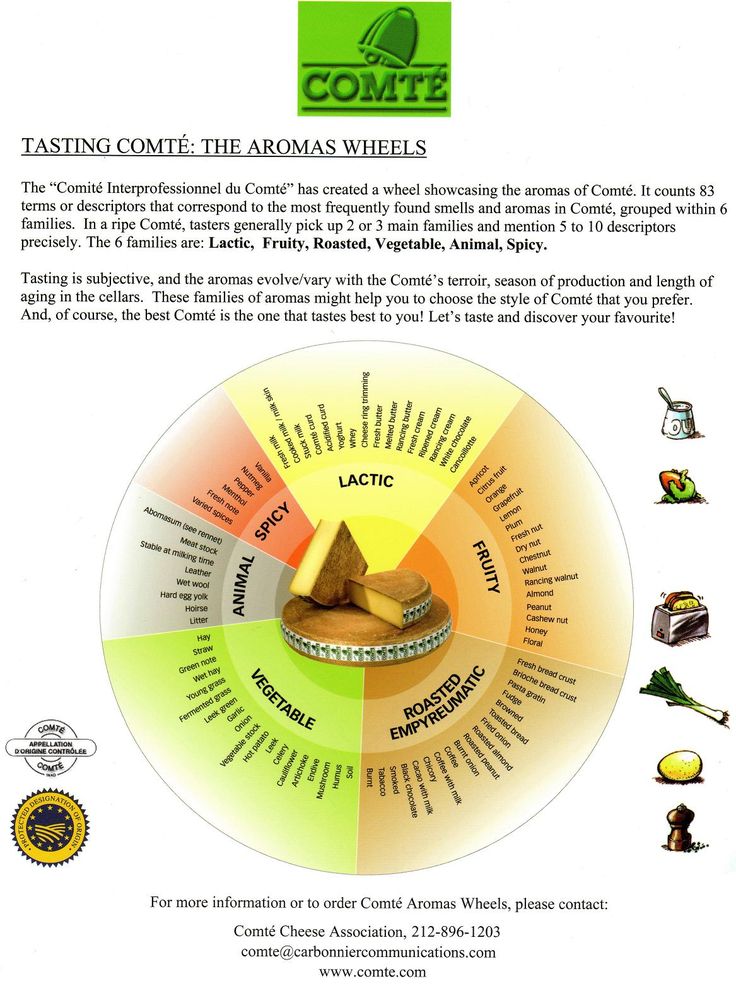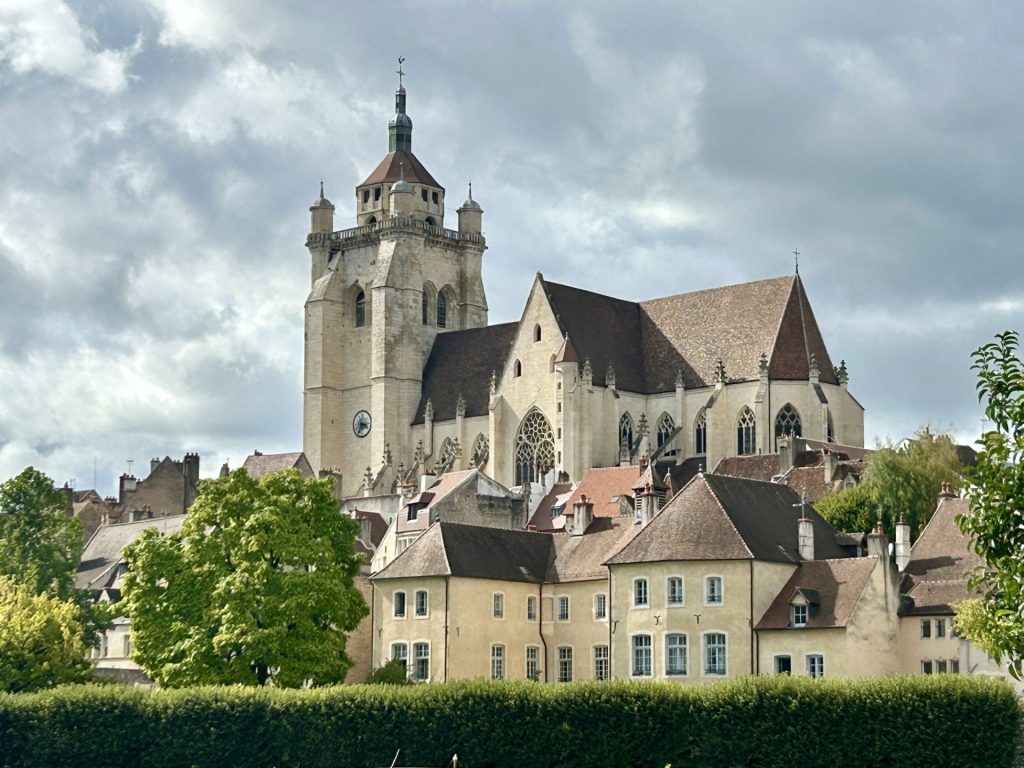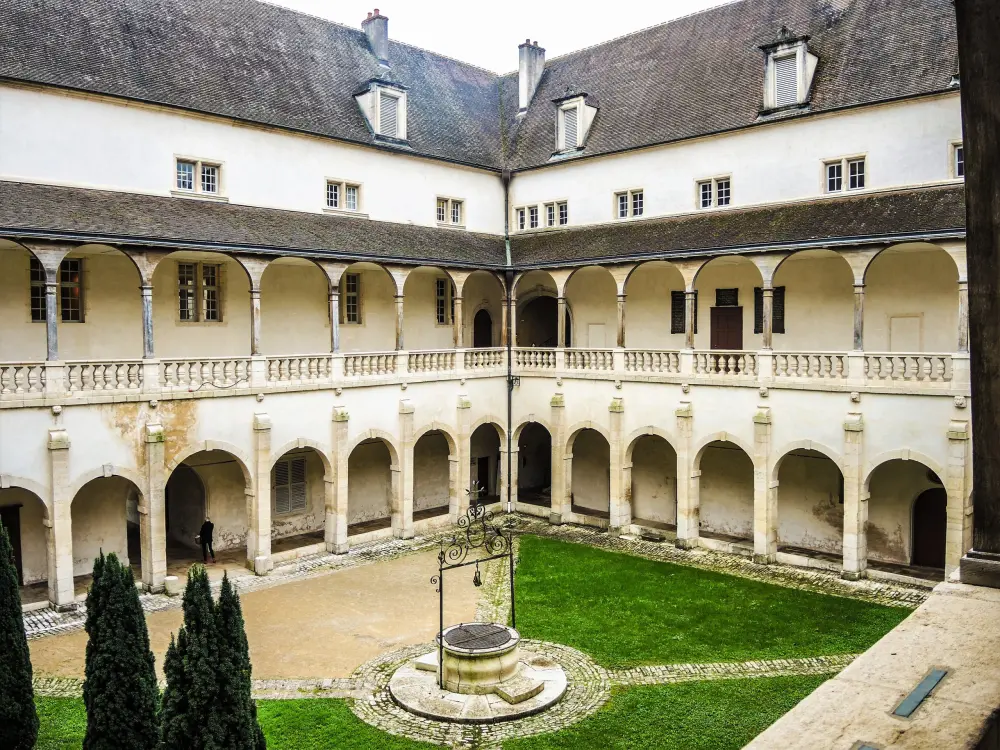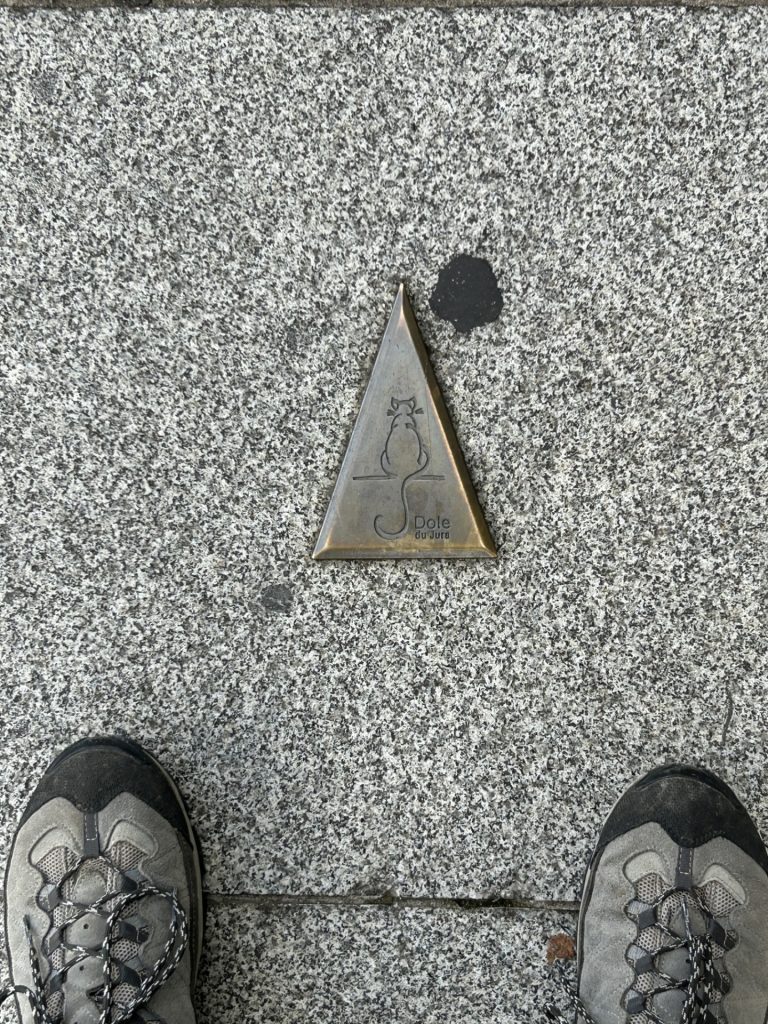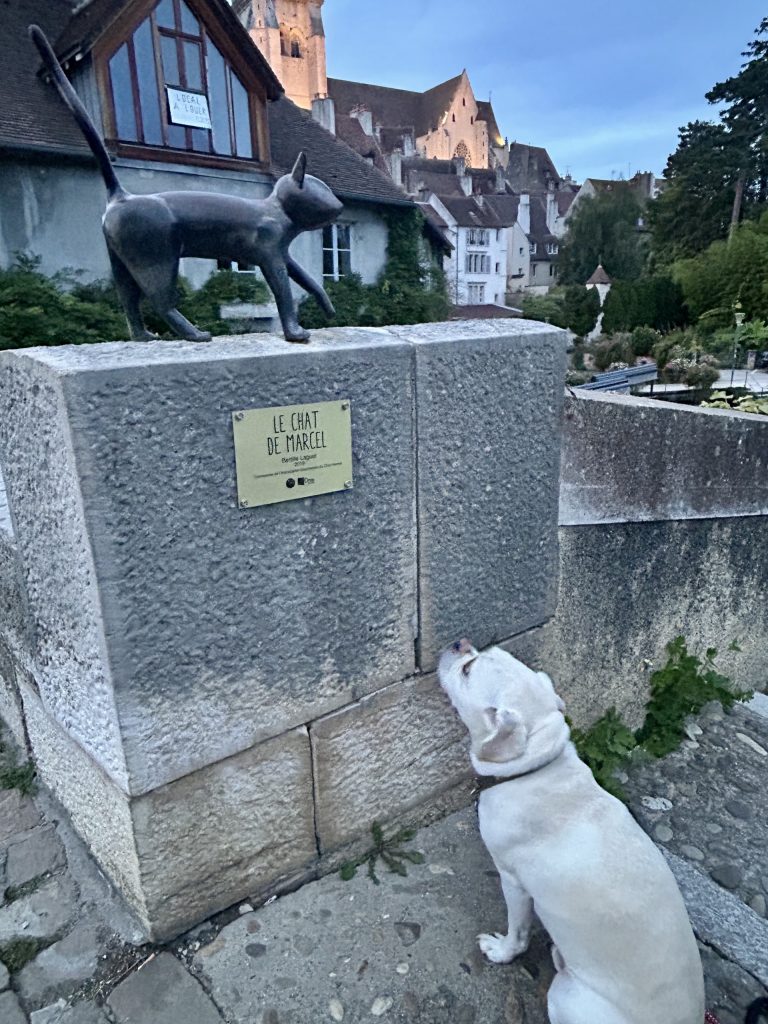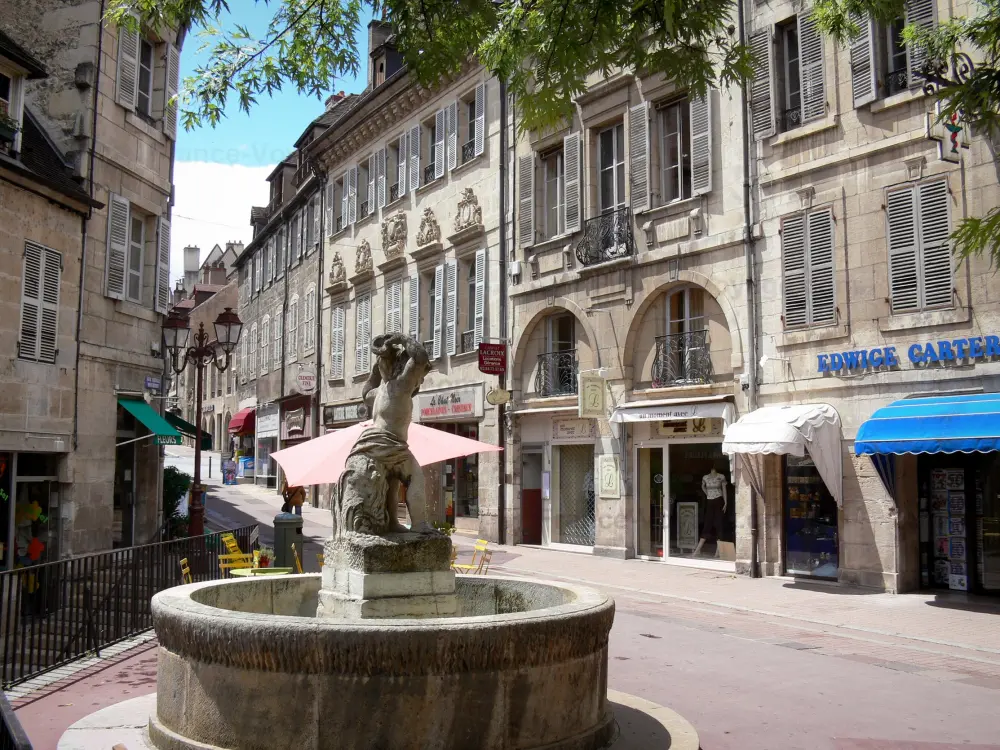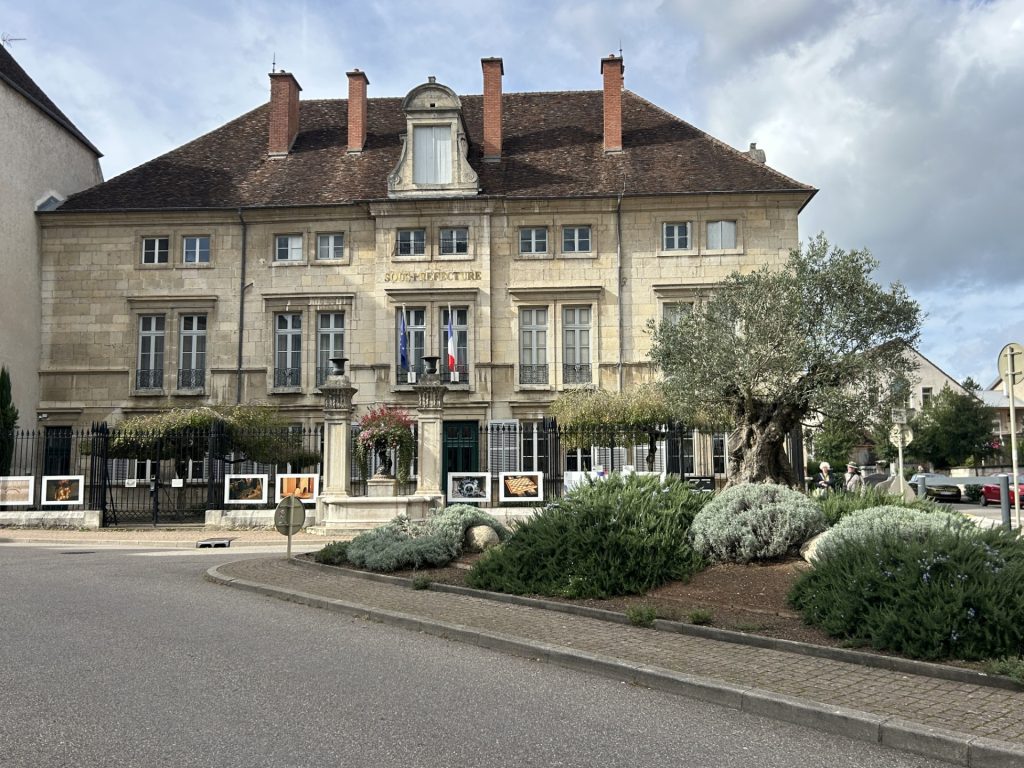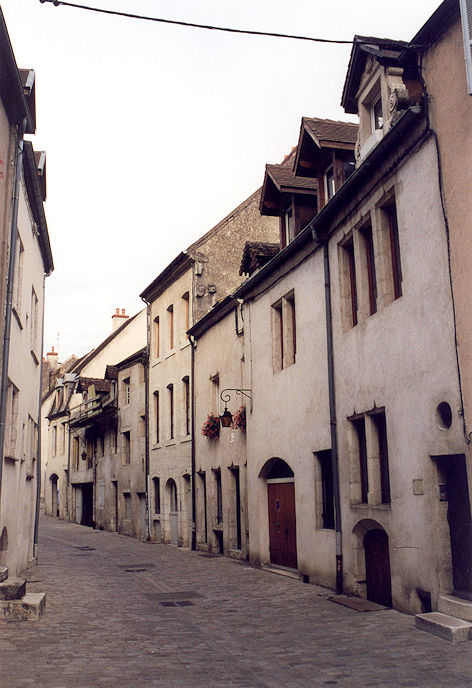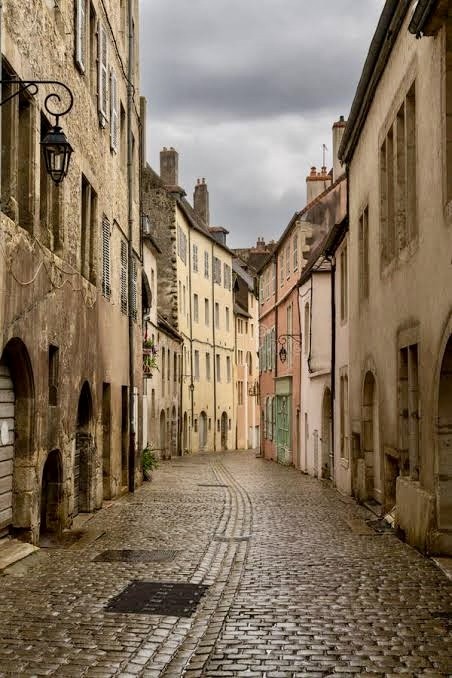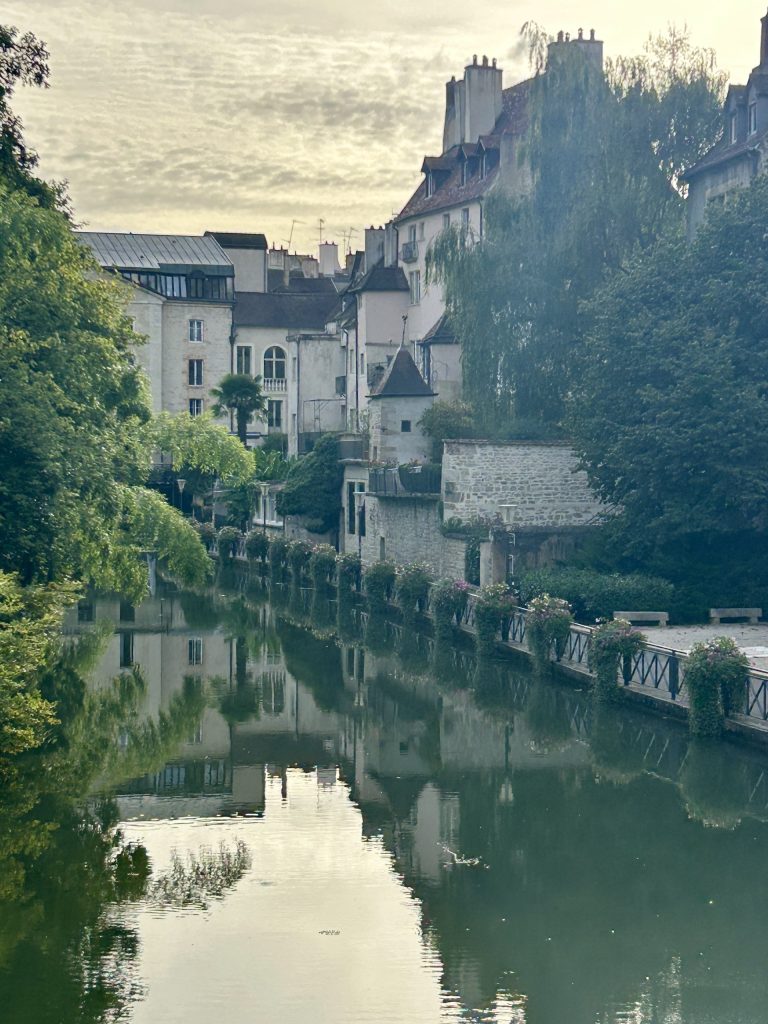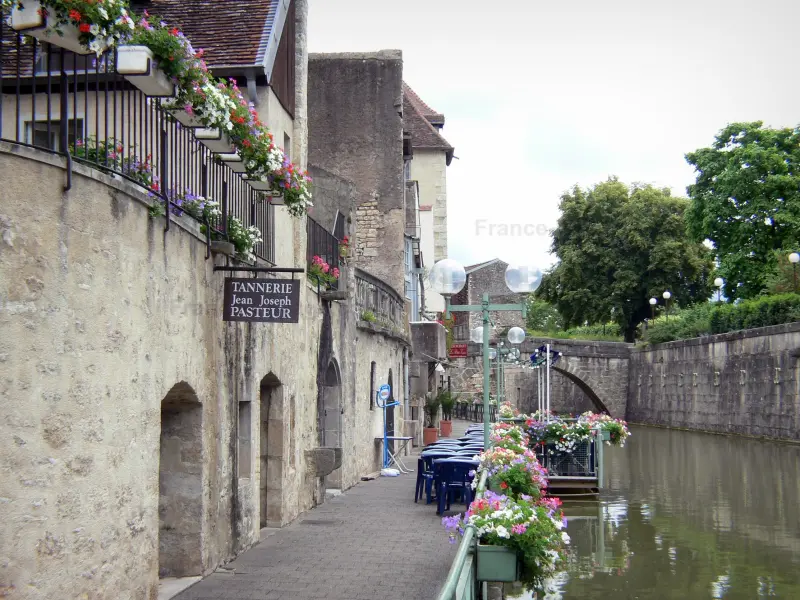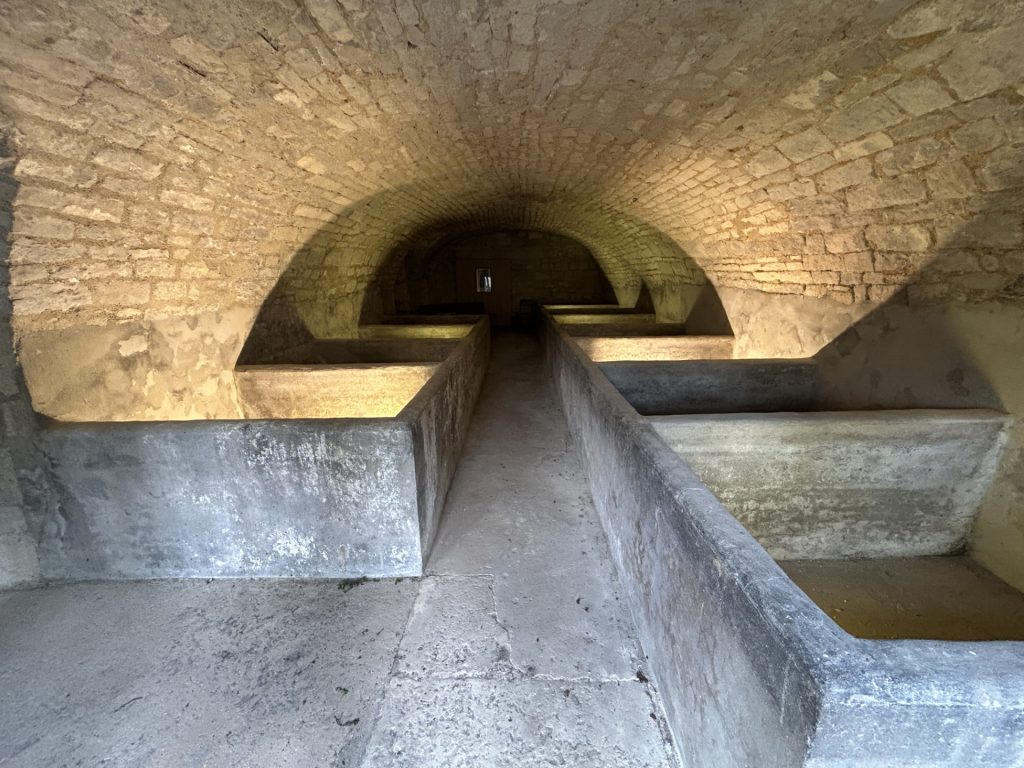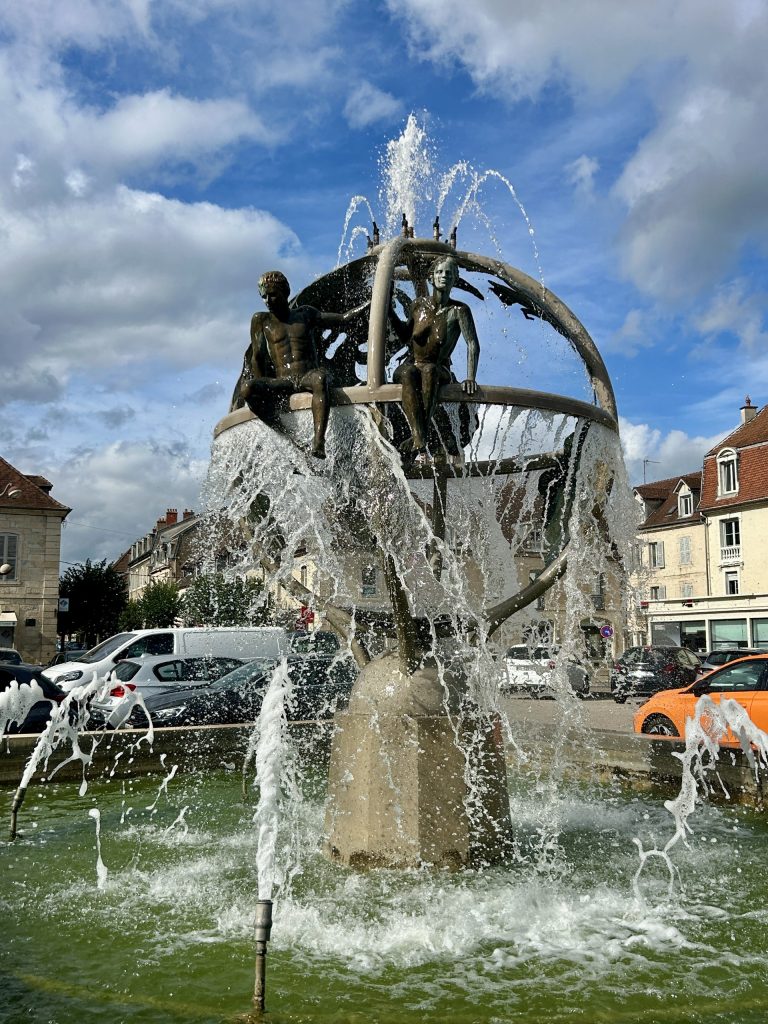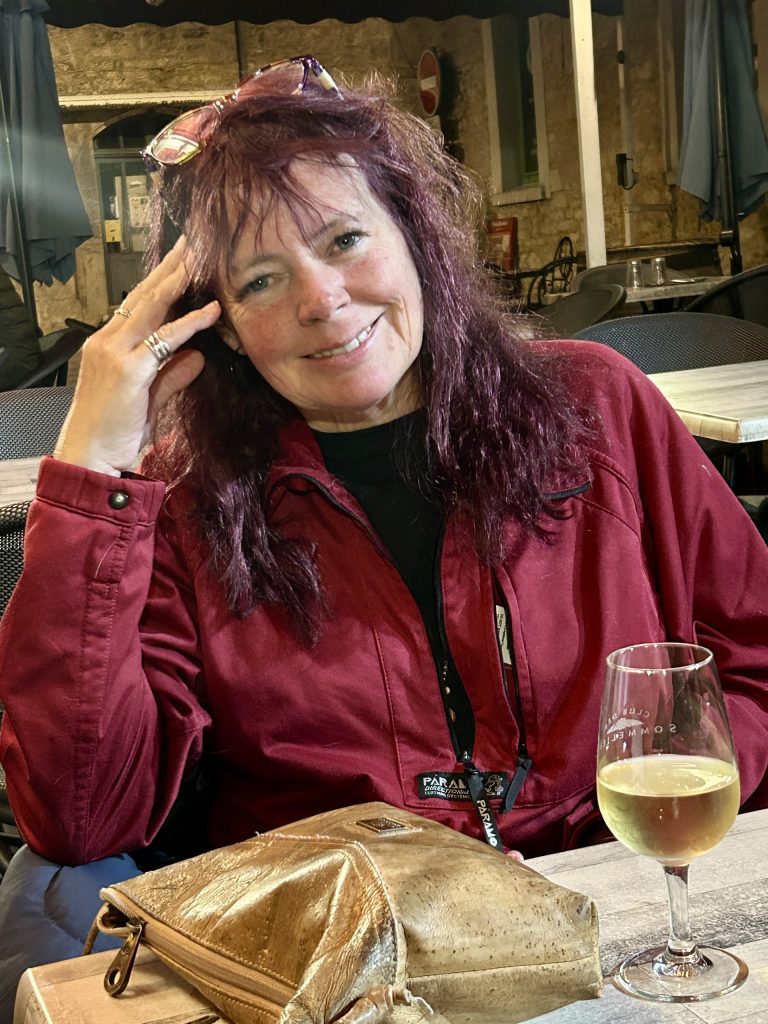Located in Jura, one of Franche Comte’s most beautiful Departments and surrounded by vineyards, Arbois is a small town of about 3,500 people but, despite it’s limited size, it’s a jewel of a place, oozing charm and character.
It’s the self styled regional capital of Jura and I’ll not argue with that claim given that the vineyards around Arbois currently account for almost 70% of Jura’s wine production and the wines themselves were well renowned way back in the times of the Roman Empire. We had come to Arbois to taste some of these famous wines.
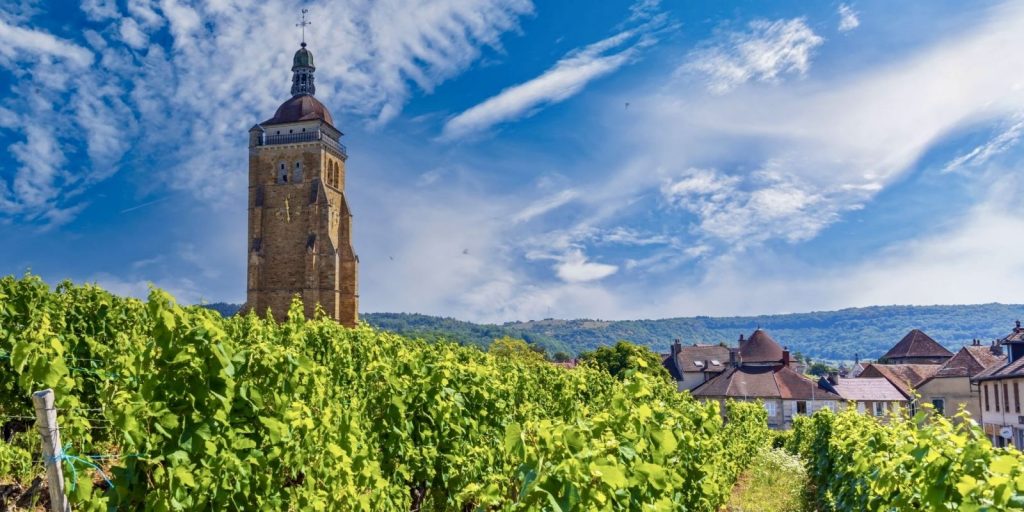
The town is distinguished by it’s many ochre-coloured, stone buildings which make for a warm, golden appearance. The centre is resplendent with cafes and restaurants (including a 2 star and a 1 star Michelin restaurant), numerous boutique shops (we saw no chain stores here), countless wine shops (most of them on the different approaches to the town’s main square) and, especially worth visiting, the Hirsinger Chocolate Factory which deserves a paragraph all of it’s own in this blog.
In 1900, after training as a chocolatier in Paris, Auguste Hirsinger founded his own chocolate factory in Arbois. This business was passed on, first to one of his sons and then; in turn, to one of his granchildren and; more recently, to one of Auguste’s great grandsons, Edouard Hirsinger. Edouard Hirsinger has taken the family business to unparalleled success with his unusual flavour combinations and; he is one of very few chocolatiers to have been awarded the MOF (Meilleur Ouvrier de France) in recognition of his skills. However, it is the story of his grandfather, also called Edouard, which most impressed me. Grandfather Edouard Hirsinger took over the business from Auguste in 1929. In 1940, after France was knocked out of World War II and the Germans arrived in Arbois, he courageously closed the business down for 5 long years until the town was liberated by US soldiers. That takes passive resistance to a whole new level.
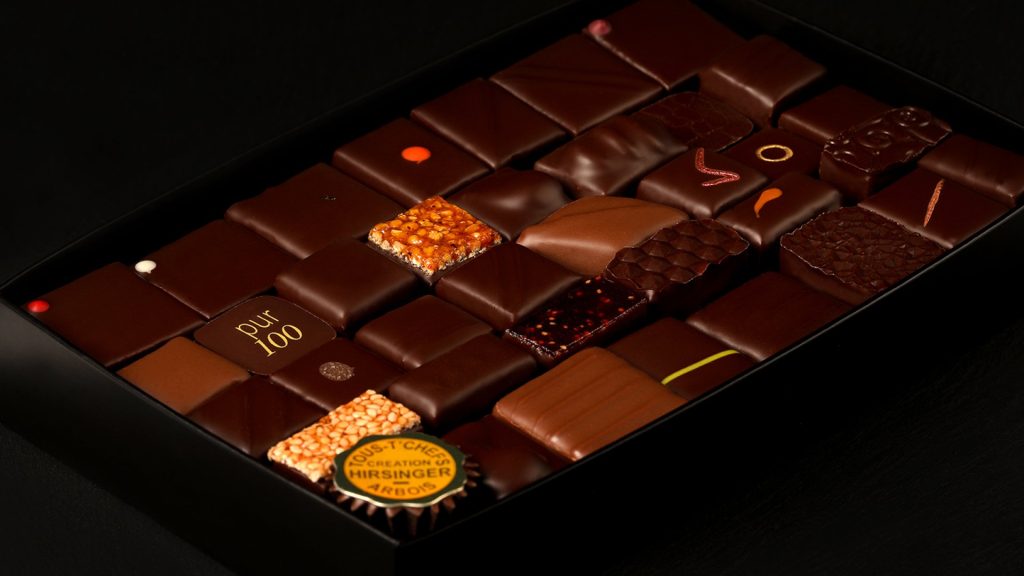
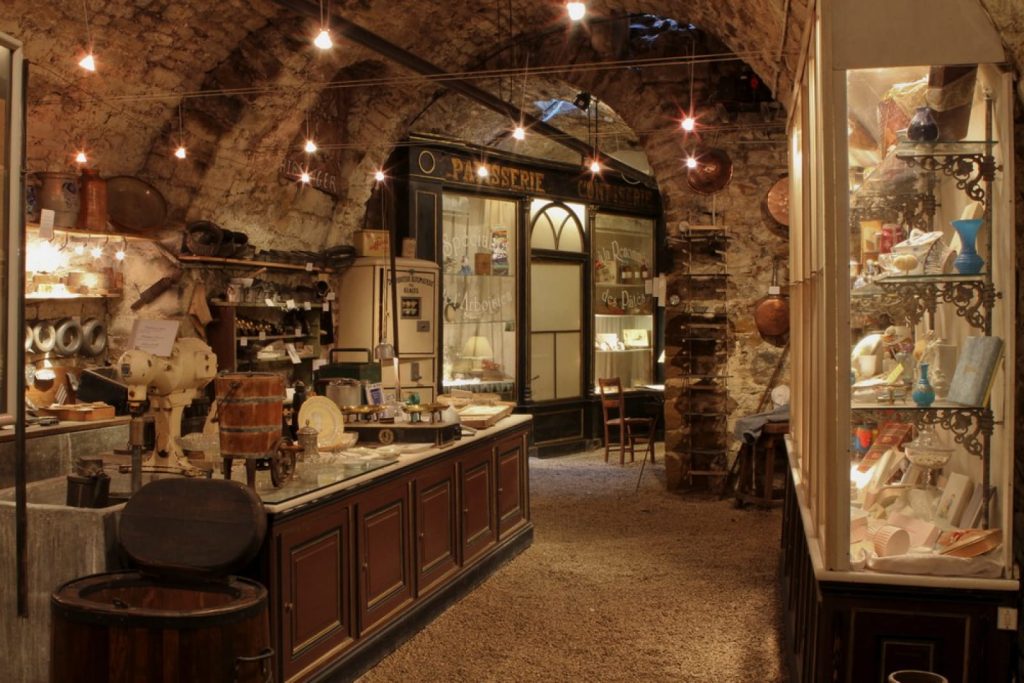
I was writing in general terms about the town itself. Arbois was fortified during the 12th and 13th centuries but little remains of it’s medieval walls except for some of the towers (the most impressive of which is the Gloriette Tower) and the 12th century Chateau Pecauld (now a wine museum).
To my mind, the three most interesting features of Arbois are it’s church (L’Eglise Saint-Just), it’s main square (La Place de la Liberte) and it’s river (the Cuisance) and I’ll write a little about each of those but there is so much more. Some would argue that Louis Pasteur’s house (La Maison Pasteur) warrants inclusion in the top three and, yes, La Maison Pasteur in Arbois (now a museum dedicated to his life) is a site worth visiting (if only to see the reconstruction of his home laboratory) but, the house where Pasteur was born in in Dole and lived the early years of his life was also converted into a museum (see my blog on Dole). So, been there, done that, got the t-shirt and I’m not going to include Pasteur’s house in my top three here.
The most imposing building in Arbois is, without any doubt, the 17th century L’eglise Saint-Just which was listed as a historic monument in 1913. It’s remarkable 60 metre bell tower dominates the town. During summer months it’s possible to ascend the tower’s 209 steps for panoramic views over the town and surrounding vineyards but, visiting too late in the year, I missed out on that. No matter, Saint-Just’s interior with it’s three naves separated by a mix of square and round pillars; no less than 11 chapels and; an exquisitely carved pulpit makes it about as fine a church as anyone could want. It’s so full of character. I’ll let some of my photos do the talking…

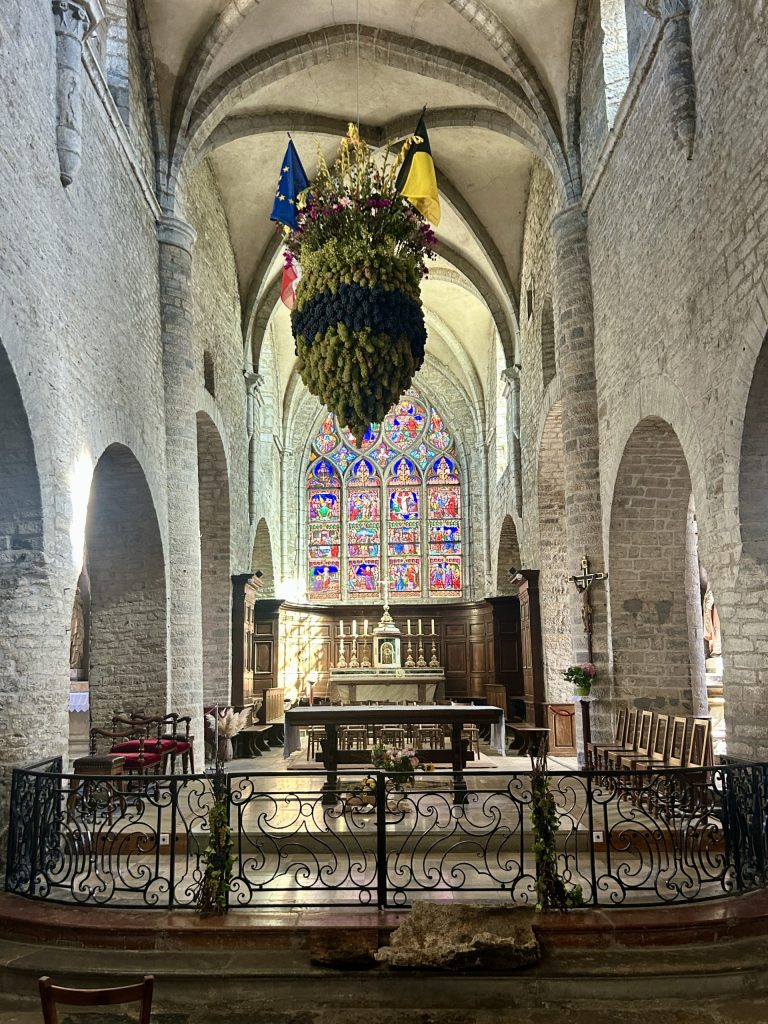
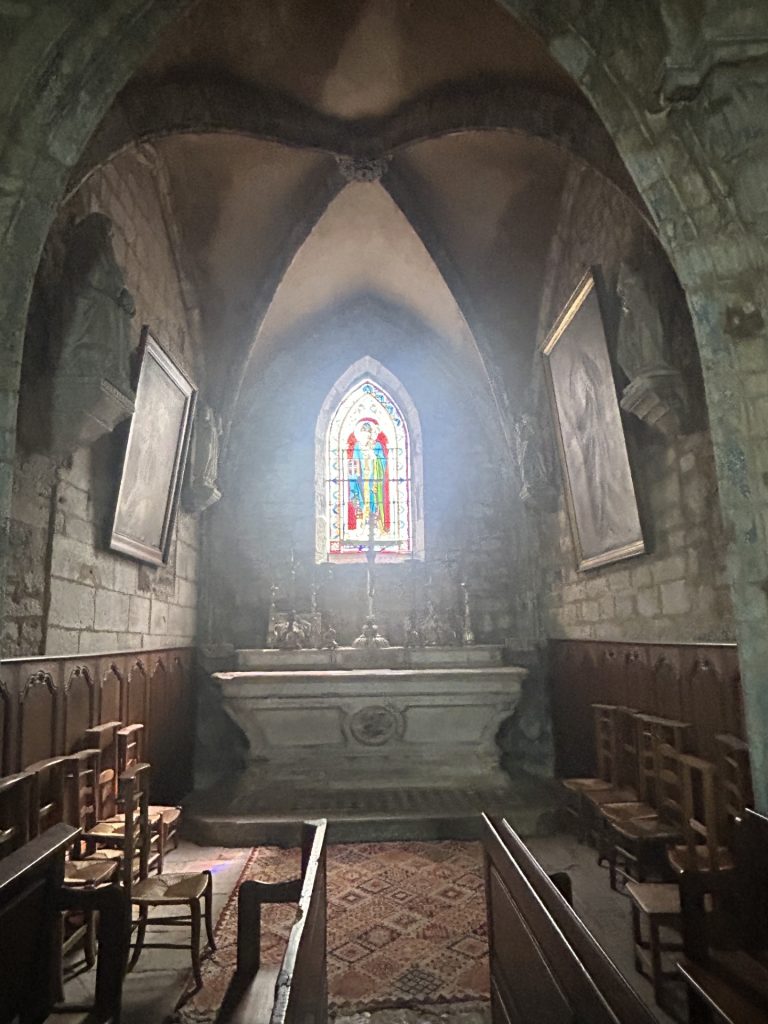
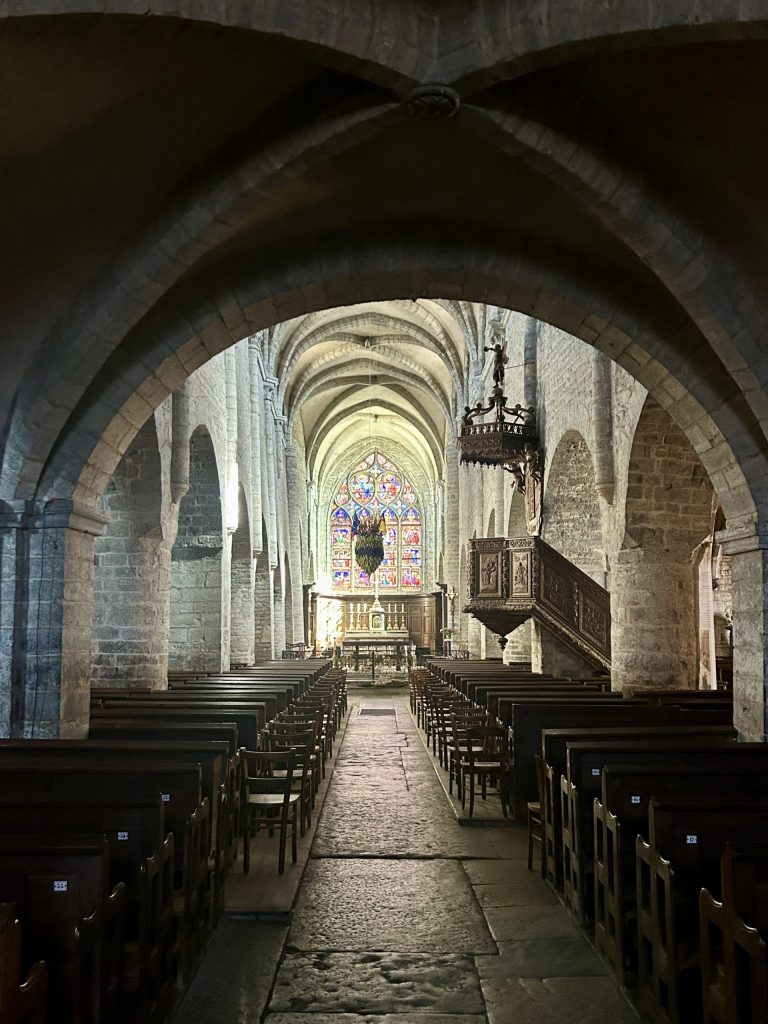
The most charming part of the town is the lively Place de la Liberté (Liberty Square) where all of the town’s principal streets converge. It is stunning. A ‘Fountain of Lions’ built by the architect Lapret in 1806 sits in the centre of the square which is framed by elegant arcaded yellow brick buildings (most with coloured shutters) and almost completely covered by fluttering flower shaped decorations – bunting? What a place to be on market days!
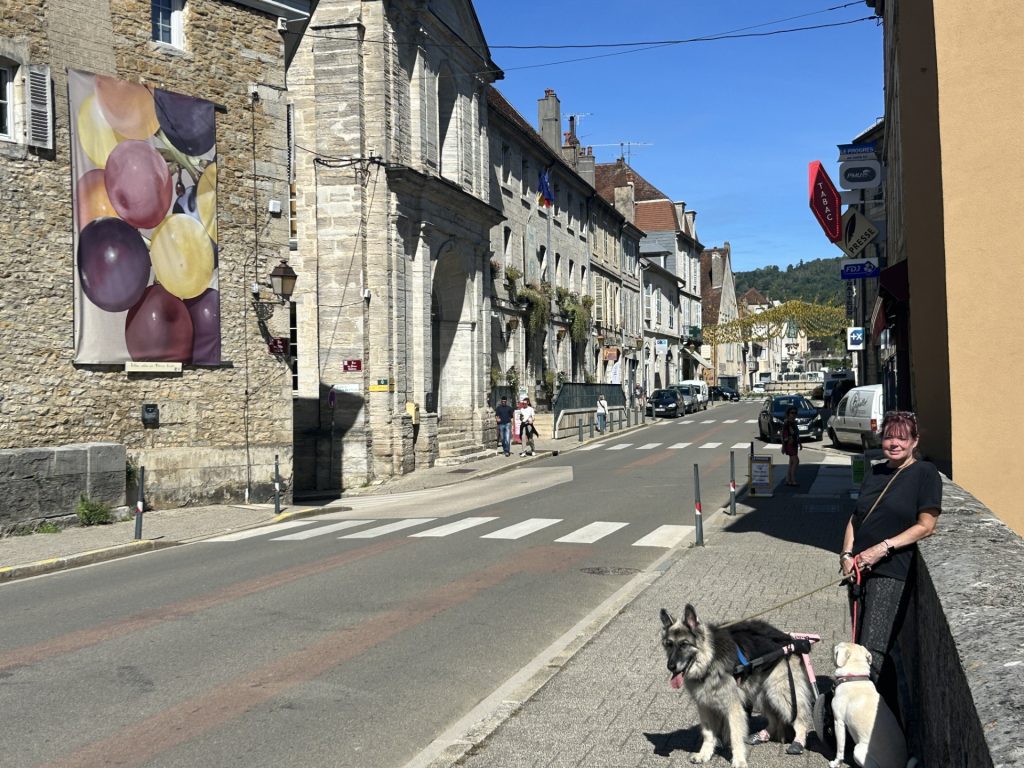
.
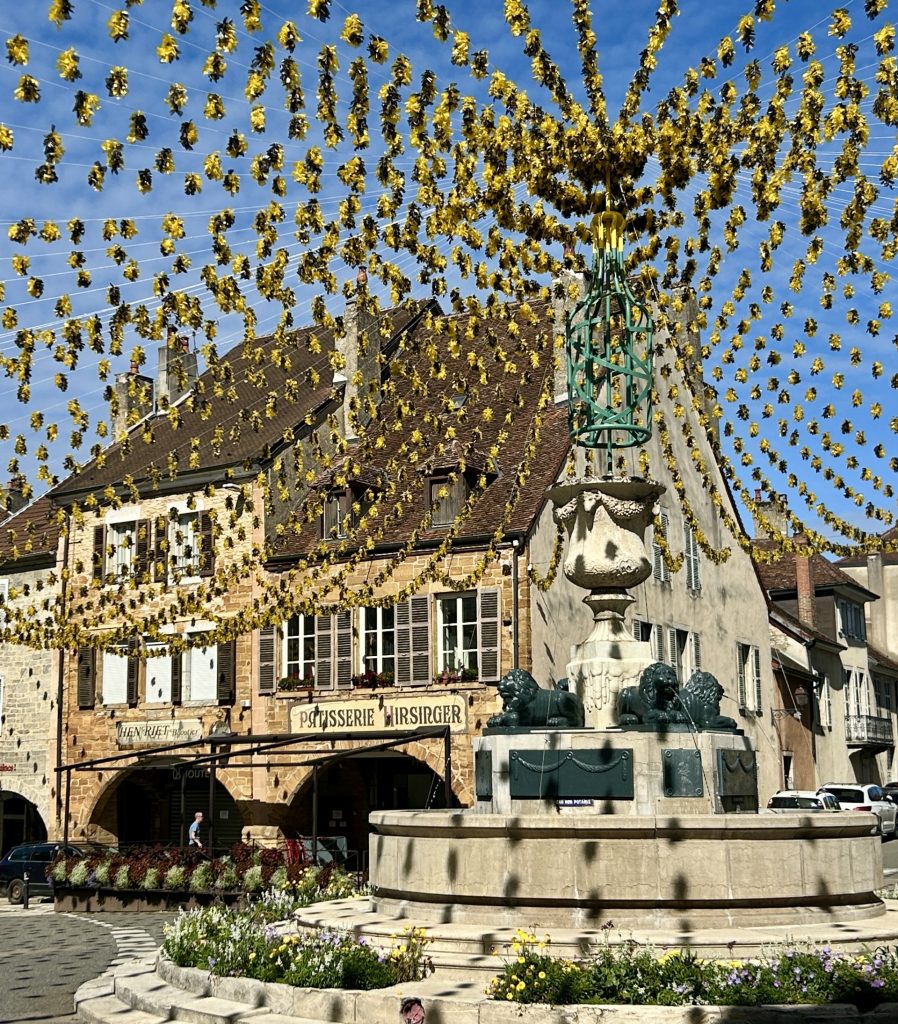

The River Cuisance meanders through Arbois and makes for some very interesting features (one of which is the narrow Pont des Capucins) but it is a few kilometres outside of the town where the river is at it’s most impressive. There’s a magical little waterfall where water cascades down over tufa terraces into a series of shallow pools which are ideal for cooling down in on a hot day. This is the Cascade des Tufs. There’s a fine 17.5 kilometre circular walk from Arbois which leads through the beautiful Planches Pres d’Arbois Valley to this waterfall but most people prefer the easier and considerably shorter 1 kilometre walk from a free car park in the village of Planches Pres d’Arbois (Coordinates 46°52’35.0″N 5°48’24.7″E). The choice is yours.



So, back to Arbois and a little about the local wines. That was, after all, the main reason for our visiting Arbois. Vanya had previously tasted Cremant de Jura but not been very impressed. Me, I’m not a great Cremant drinker but I was keen to try the famous Yellow Wine of Jura for the first time. We started in the Cave Jerome Arnoux, sampling at least 8 local wines and we were delighted with the outcome.
Vanya now maintains that Cremant de Jura can hold it’s own against any of the other 6 French Cremants. The problem has been that Jura has never properly recovered from the phylloxera outbreak which devastated the French wine industry at the end of the 19th century. Yes, the area is once again firing on all cylinders and back to producing great wines but it remains the smallest of France’s major wine producing regions and relatively few of the better wines seem to be finding their way to the UK or even on to the shelves of the larger supermarkets in France. Vanya tasted some very good Cremant after arriving in Jura and she’s taking some back home. For my part, I am hooked on Jura’s yellow wine. I bought a couple of bottles of Arbois Vin Jaune 2016 to take home but one of those is already finished.
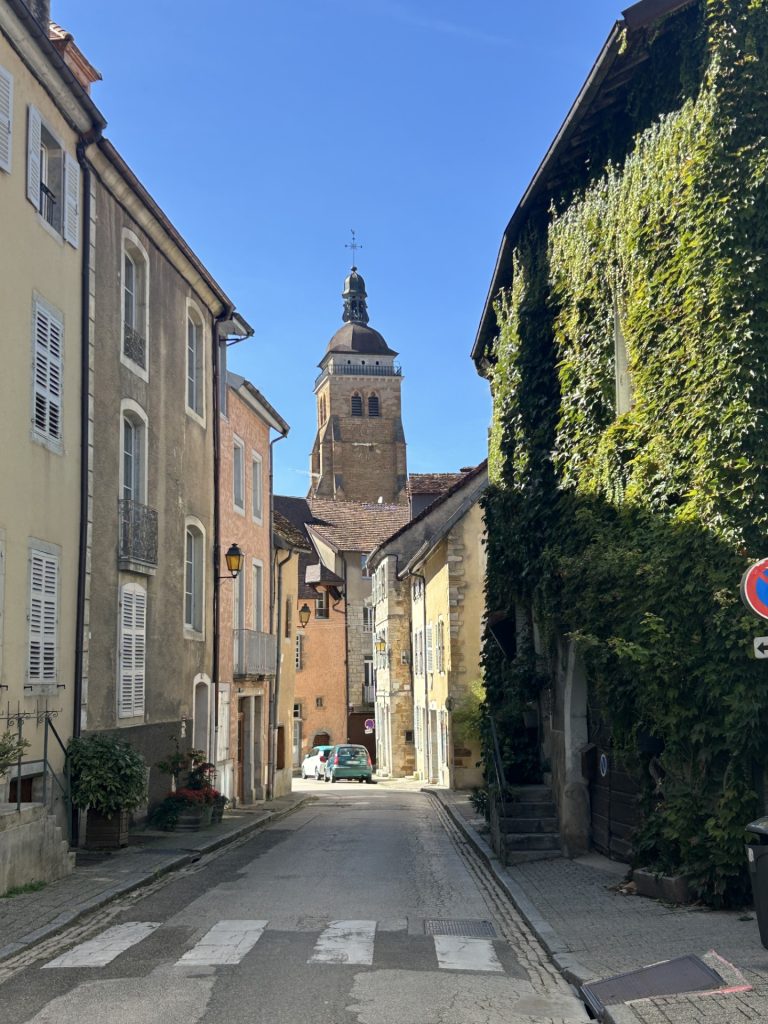
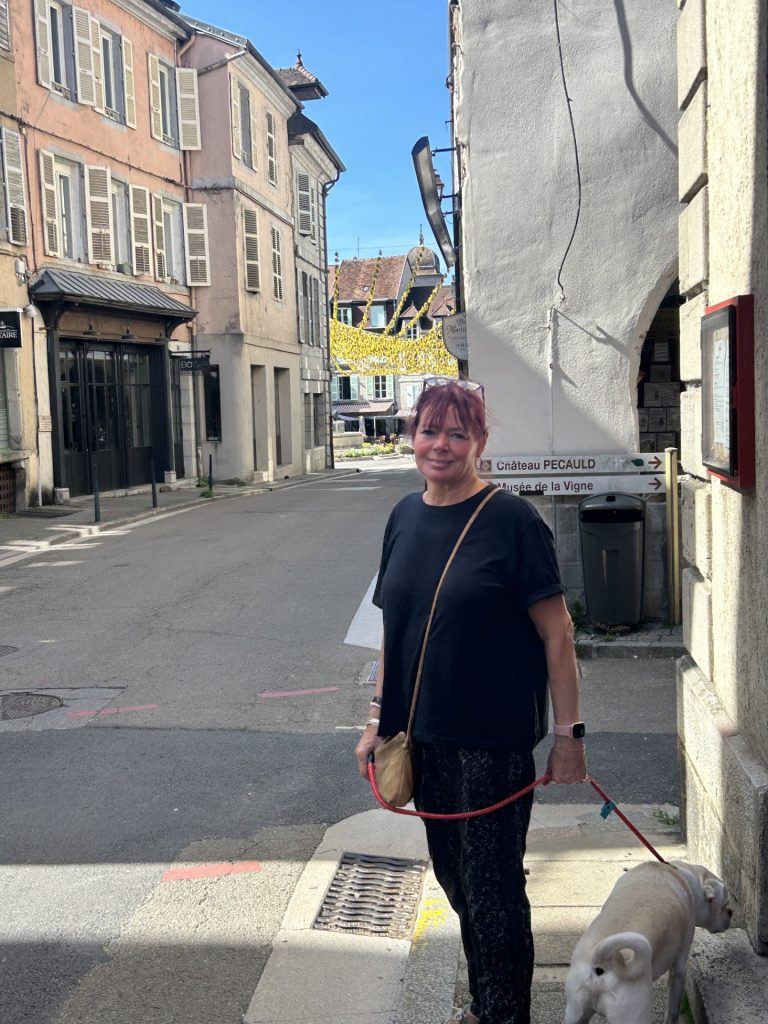
What surprises me, given that the wineries in Jura are relatively small compared to those in other wine growing regions in France, is the great diversity of wines being produced in and around Arbois. I have been advised the terroir is best suited to the production of red wines but there seems to be no shortage of dry white wines, roses, vin jaune, vin de paille (a sweet wine typical of Jura) and, of course, the aforementioned Cremant.
In case you haven’t already picked up on it, my favourite is the yellow wine but I appreciate it is not to everyone’s taste. It is made from the Savagnin grape variety (which come in small green or yellow grape clusters) and has a very recognizable aroma. It’s taste is not unlike a dry sherry but it is not a fortified wine. It is matured in a barrel under a film of yeast known as voile and it stands for 6 years. It goes exceptionally well with Comte cheese and is used in many recipes. During our stay in Jura, I ate a Morel Soup which contained a fair wack of yellow wine and it was gorgeous. I understand too that a very popular dish in Jura is trout in yellow wine.
Another famous wine from this area (although I have yet to try it) is vin de paille. It is what is known as a straw wine and is very sweet. It seems that vin de paille is made from grapes which have been dried off the vine to concentrate their juice. After a careful hand harvest, selected bunches of grapes are then laid out on mats (they used to be straw mats) in full sun. I’ll be trying that wine next year when we return to France.
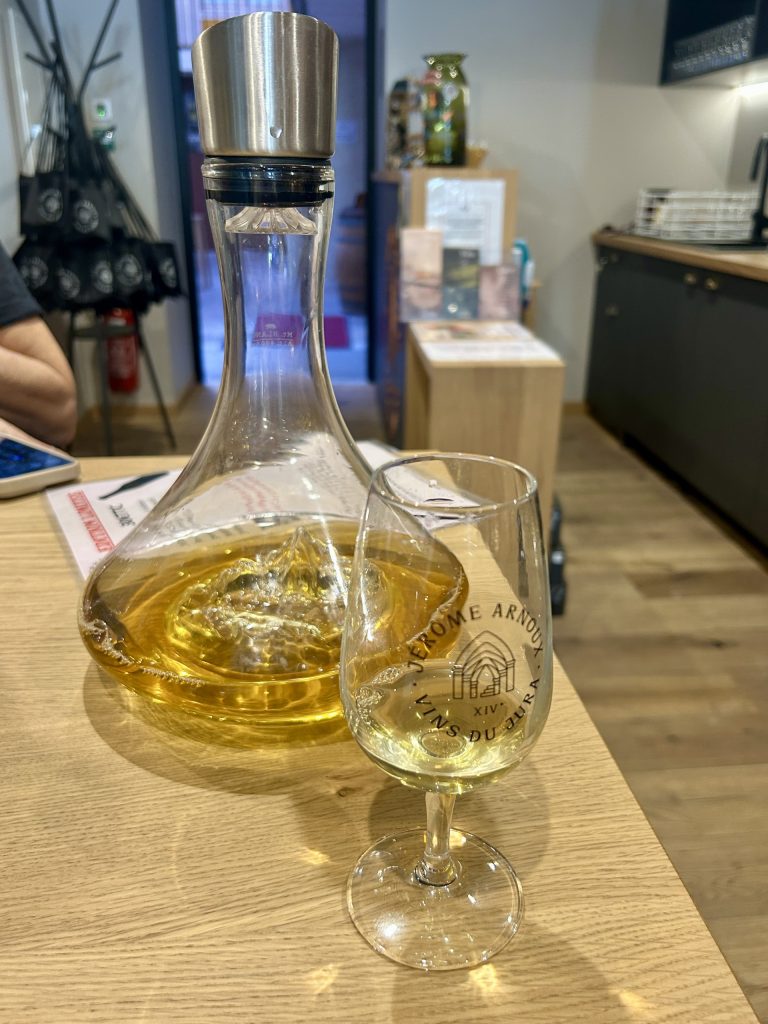

Oh yes! Vanya and I both love Jura and we’ll definitely be back next year – not that we’ve yet finished with the place this year. Tomorrow we’ll be visiting two more places in Jura being Baume Les Messieurs (a plus beau village de France) and Poligny (the self styled capital of Comte cheese).

